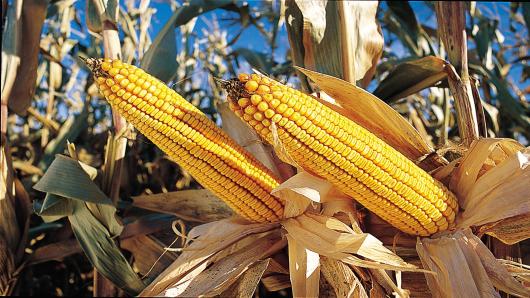-
Tips for becoming a good boxer - November 6, 2020
-
7 expert tips for making your hens night a memorable one - November 6, 2020
-
5 reasons to host your Christmas party on a cruise boat - November 6, 2020
-
What to do when you’re charged with a crime - November 6, 2020
-
Should you get one or multiple dogs? Here’s all you need to know - November 3, 2020
-
A Guide: How to Build Your Very Own Magic Mirror - February 14, 2019
-
Our Top Inspirational Baseball Stars - November 24, 2018
-
Five Tech Tools That Will Help You Turn Your Blog into a Business - November 24, 2018
-
How to Indulge on Vacation without Expanding Your Waist - November 9, 2018
-
5 Strategies for Businesses to Appeal to Today’s Increasingly Mobile-Crazed Customers - November 9, 2018
Top Scientists Say GMOs Are Safe, But Don’t Always Deliver On Promises
Genetically modified crops have a controversial history, especially when it comes to deciding whether or not the foods are safe – for the environment and for our health.
Advertisement
“The science behind the safety of modern agricultural technology is clearer than ever”.
This is the latest of several reports on genetically modified crops by the National Academies, which are private, nonprofit organizations set up by Congress to give advice on issues related to science, technology and medicine.
Advocacies have pushed for the mandatory labeling of genetically modified food, but results of the report suggest that this move is not necessary.
The study noted that the most common GMO crops in 2015 were soybeans, cotton, corn, and canola, and that genetically engineered crops have been planted on about 12 percent of the world’s total viable cropland. No one in the field of biotechnology was apart of the committee, however, it is possible that some members may have acted in a consulting capacity for companies that perform or support genetic engineering. “Despite many years of huge investment, the only genetically-engineered characteristics that have been put into widespread use are those that allow a crop to withstand the application of a herbicide or be toxic to pests”, she added.
“The inescapable conclusion, after reading the report, is the GE crops are pretty much just crops”, said Wayne Parrott, professor in the Department of Crop and Soil Sciences at the University of Georgia. Crops that were engineered to resist bugs, for instance, reduce incidence of insecticide poisoning, and those that were altered to produce more vitamin A can cut cases of blindness and death caused by vitamin A deficiency. It even goes on to say that GMOs (which the Academy refers to as GEs) can actually provide numerous benefits for human and crop health.
In spite of the findings, study committee chairman Fred Gould stressed out the necessity of the continued probe over the possible effects that could appear later.
The National Academy of Sciences is trying to make this report more easily accessible to the public.
So if you’re looking for something that might settle the debate over genetically engineered crops once and for all, keep looking.
“Overall, the committee found no conclusive evidence of cause-and-effect relationships between GE crops and environmental problems. Ultimately, however, decisions about how to govern new crops need to be made by societies”, reads the report’s preface.
“We dug deeply into the literature to take a fresh look at the data on GE and conventionally bred crops”, Gould said.
To gauge whether foods made from GMOs were safe for human consumption, the committee compared disease reports from the United States and Canada, where such crops have been consumed since the mid-1990s, and those in the United Kingdom and western Europe, where they are not widely eaten.
Advertisement
The study did find evidence of gene flow between genetically-modified plants and neighboring plants, but “no examples have demonstrated an adverse environmental effect from this transfer”, as the National Academies say in a press release.





























